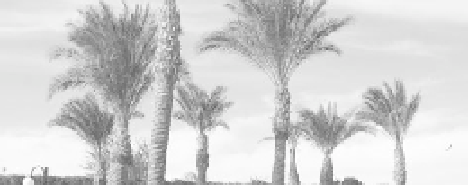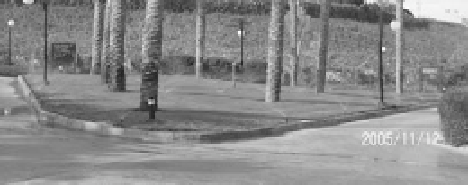Environmental Engineering Reference
In-Depth Information
Reforested vegetation
—To accelerate development of new vegetation humans plant trees in mountainous
areas throughout the world. The dominant species of wood are planted by humans, which consist of a few
selected species; but the under-story community develops under the natural conditions and consists of
local species, which results in a complex system of
reforested vegetation
. Figure 2.21 shows an example
of the reforested vegetation in Calcutta, India. The woods were planted by humans but the lower layer of
the vegetation consists of shrubs, grasses, and liana developed naturally. In general, reforested vegetation
conforms to the natural environment and it may sustain if humans discontinue the artificial disturbance.
Fig. 2.21
Reforested vegetation in Calcutta, India. The wood was planted by humans but the lower layer of the
vegetation consisting of shrubs, grasses, and liana developed naturally
Domestic vegetation
is a different concept from reforested vegetation. In the process of urbanization,
various plants have been planted and acclimated to beautify people's living environment. Thus, domestic
vegetation has developed around cities. Such kinds of vegetation have adjusted to the human stresses
(irrigation, pesticides, wind protection, etc.) and it will not sustain if humans discontinue management.
This is a phenomenon of yield. Of course, a crop field is a kind of domestic vegetation. Figure 2.22
shows the domestic vegetation around a living area planted to beautify the environment in Sharm El
Shrek on the Sinai Peninsula in Egypt. There is almost no rain in the areas and the vegetation relies on
irrigation by humans. The water is desalinized seawater from the Red Sea.
Fig. 2.22
Domestic vegetation around a living area in Sharm El Shrek on the Sinai Peninsula in Egypt, for which a
sprinkler system distributes desalinized seawater from the Red Sea






Search WWH ::

Custom Search